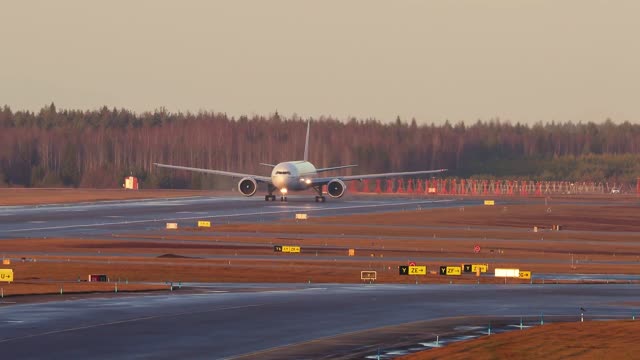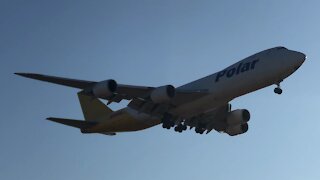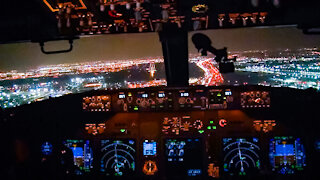Premium Only Content

Impressive Crosswind Landing And Golden Takeoff Of Boeing 777
There is a common consent amongst flyers that both pilots and passengers attach great importance to taking off and landing, even though of the two, more attention is given to touching the ground. Even if the phases of take-off and flight along the route are carefully planned and executed by the pilot, a rough landing can cast a shadow on his or her abilities and competencies as a professional. If anything goes wrong, the person will forever be branded as a bad pilot. Luckily, the reversed rule applies: the ability to turn rough landing condition into victory can turn an anonymous pilot into a real legend.
Take a look at the video at the top of the page and decide if this common attitude is justified or not.
This dramatic video shows passenger plane battling fierce crosswinds on landing and takeoff. It was one very windy day at Stockholm Arlanda airport on December 28, 2016, in Sweden. There was a gust right before touchdown that threw the camera off a little bit.
This video shows heavy crosswind landings and takeoff of a Boeing airplane. Severe crosswinds often cause difficulties for pilots, especially during takeoff and landing. It is spectacular and praiseworthy to see these pilots fight with wind speeds of up to 60 knots.
The incredible footage was filmed at Stockholm Arlanda airport in Sweden and shows plane bouncing on the wind in severe weather conditions that usually cause delays and cancellations throughout Europe.
This incoming aircraft was struggling to maintain a straight line, and then a plane is captured making a golden takeoff. To laymen like us, flying a plane may seem like a piece of cake, but despite demanding serious skills and education, flying a plane also takes make factors in consideration.
When the weather conditions are bad, flights can be canceled or diverted. However, those planes that do fly are required to circle for a further bumpy hour as air traffic control tries to find space for them and informs about the conditions. Plane bouncing can often cause passengers to get ill and sick.
Rough landing can be caused by weather conditions, technical problems, excess weight of the aircraft, or errors in piloting. The term "rough landing" usually means that the pilot has managed to maintain full or partial control of the vessel, in contrast to an uncontrolled descent (accident), which usually leads to the destruction of the vessel.
Rough landings vary in the severity of the consequences: from slight discomfort to the passengers of the vessel, leading to serious damage to vessels and passenger and crew casualties.
If the aircraft has experienced a rough landing, then, even in the absence of visible damage, it carries out a list of compulsory works determined by technical documentation, such as, for example, flaw detection of racks and a complete check of the chassis systems with control testing of performance (the airplane at the same time is hung out on the lifts) and the so-called "leveling the aircraft" along the reference points, that is, checking the geometry of the fuselage for deformation.
There is a tradition that after a rough landing, the pilot gets a full round of applause and people start seeing life in a new light.
-
 6:46
6:46
Just Planes
4 years agoBoeing 777 Night Landing
152 -
 1:25
1:25
johnwmt
4 years ago $0.04 earnedBoeing 737-800 landing
129 -
 4:46
4:46
Aviation
4 years ago $0.01 earnedBoeing 747 landing at Incheon airport
145 -
 3:05
3:05
sierragliderpilot
4 years ago $0.93 earnedGlider ASW-24, 90 degree crosswind landing
694 -
 1:09
1:09
N 2 BOOST
4 years ago $0.01 earnedBoeing C-17 Globemaster III landing
392 -
 1:27
1:27
N 2 BOOST
4 years ago $0.01 earnedBoeing C-17 Globemaster III takeoff
176 -
 12:29
12:29
Just Planes
4 years agoBoeing 737MAX landing at Newark Airport
641 -
 17:52
17:52
Just Planes
4 years agoBoeing 737-800 Night Landing in Toronto
184 -
 1:38
1:38
ViralHog
5 years ago $2.77 earnedPlane Expertly Executes Heavy Crosswind Landing and Takeoff
4.09K1 -
 11:50
11:50
Just Planes
4 years agoBoeing 787 Night Landing at Hong Kong
220